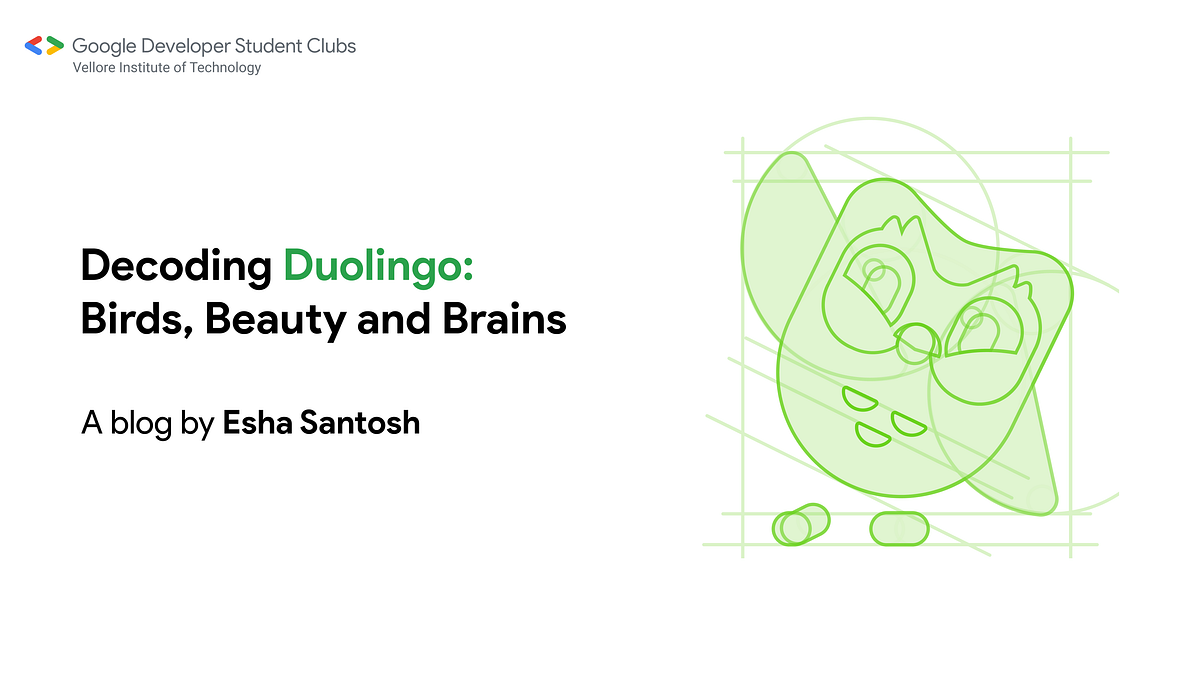insight - Language Learning Technology - # Duolingo's Interdisciplinary Approach to Designing an Immersive Language Learning App
Duolingo's Innovative Approach to Language Learning: Blending Technology, Design, and Gamification for an Engaging User Experience
Core Concepts
Duolingo's innovative approach to language learning combines thoughtful technology design, captivating visuals, and gamification elements to create an engaging and effective user experience that transcends traditional language learning.
Abstract
The article explores how Duolingo, a leading language learning app, has leveraged an interdisciplinary approach to technology and design to shape a unique and compelling learning journey for its users.
Key highlights:
Illustrative Language:
Duolingo's distinctive illustration style, featuring rounded shapes and vibrant colors, creates visually engaging narratives that foster a connection beyond just words on a screen.
The incorporation of a mythical phoenix icon as the "streak" symbol, a common symbol of power and triumph across cultures, helps transcend linguistic and cultural barriers.
Animation:
Captivating motion design, such as animated skill icons, helps guide the user's attention and increase engagement.
The integration of characters "speaking" the sentences learners translate, with precise timing and viseme mapping, enhances the learning experience.
The use of state machines in the Rive design tool enables the creation of interactive and dynamic animations.
User Interface and User Experience (UI/UX):
Gamification elements, such as progress bars and skill-focused cues, serve as a guiding companion throughout the language acquisition journey.
The strategic use of spaced repetition, with the progress bar intentionally set to 80%, encourages learners to revisit past material while advancing with new lessons.
Data and AI:
Duolingo's custom AI models, including the Student model and Birdbrain model, create a personalized learning experience by analyzing user data and optimizing exercise selection.
The use of half-life regression and bandit algorithms helps determine the optimal timing and content for push notifications, encouraging consistent language practice.
The article concludes by highlighting how Duolingo's interdisciplinary approach to technology design has the potential to reshape the broader landscape of education and skill development, making learning more accessible and engaging.
Decoding Duolingo: How Technology Design Can Shape Learning Journeys
Stats
Incorporating the phoenix icon as the "streak" symbol increased the likelihood of brand-new learners continuing their journey by +1.7%.
Quotes
"Our belief is that language learning is more than just words on a screen: it's interesting characters, colorful experiences, and beautiful stories." - Greg Hartman, Art Director at Duolingo
"Most of the graphics we consume nowadays run in software. […] Unlike print, software is interactive. It can change state at any moment while it's running." - Guido Rosso, CEO/Founder of Rive
"Learners want to do what's best for their learning. […] Visual design and gamification mechanisms help communicate what to study and when." – Beth Chasse, Product Designer at Duolingo
Key Insights Distilled From
by Esha Santosh at medium.com 04-04-2024
https://medium.com/gdg-vit/decoding-duolingo-how-technology-design-can-shape-learning-journeys-8a37f48138fc
Deeper Inquiries
How can the principles of Duolingo's interdisciplinary approach be applied to other educational or skill-building platforms to enhance user engagement and learning outcomes?
Duolingo's interdisciplinary approach can be applied to other educational platforms by focusing on creating a seamless blend of technology and design that prioritizes user engagement and learning outcomes. By incorporating elements such as illustrative language, animation, user interface/user experience (UI/UX), and data/AI, platforms can create a more immersive and interactive learning experience. Utilizing visually engaging illustrations, incorporating animations to guide user attention, designing intuitive UI/UX elements, and leveraging data-driven AI models for personalized learning can enhance user engagement and improve learning outcomes across various educational domains.
What potential challenges or limitations might Duolingo face in maintaining its innovative edge as the language learning app market becomes more competitive?
As the language learning app market becomes more competitive, Duolingo may face challenges in maintaining its innovative edge. Some potential limitations include the need to continuously evolve and adapt to changing user preferences and technological advancements. Competitors may introduce new features or technologies that could outpace Duolingo's offerings, leading to a loss of market share. Additionally, scaling the platform while maintaining quality and personalized learning experiences for users can be a challenge. Balancing innovation with user retention and satisfaction amidst increasing competition poses a significant hurdle for Duolingo in staying ahead in the language learning app market.
Given the increasing role of technology in education, how can the design and development of educational apps and platforms be further improved to foster a more holistic and transformative learning experience for users?
To foster a more holistic and transformative learning experience for users, the design and development of educational apps and platforms can be further improved by focusing on several key areas. Firstly, incorporating interactive and immersive elements such as animations, gamification, and personalized learning pathways can enhance user engagement and motivation. Secondly, leveraging AI and data analytics to provide personalized feedback and adaptive learning experiences tailored to individual user needs can optimize learning outcomes. Additionally, enhancing the accessibility and inclusivity of educational apps through user-centric design and diverse content offerings can cater to a wider range of learners. By continuously innovating and integrating cutting-edge technologies while prioritizing user experience and learning efficacy, educational apps and platforms can create a more transformative and enriching learning environment for users.
0
